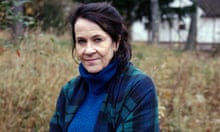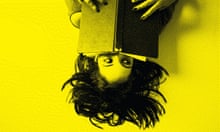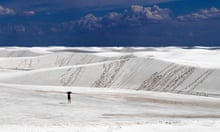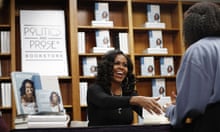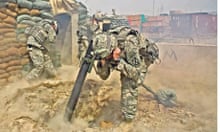Frontiers are always changing, advancing. Borders are fixed, man-made, squabbled about and jealously fought over. The frontier is an exciting, demanding – and frequently lawless – place to be. Borders are policed, often tense; if they become too porous then they’re not doing the job for which they were intended. Occasionally, though, the border is the frontier. That’s the situation now with regard to fiction and nonfiction.
For many years this was a peaceful, uncontested and pretty deserted space. On one side sat the Samuel Johnson prize, on the other the Booker. On one side of the fence, to put it metonymically, we had Antony Beevor’s Stalingrad. On the other, Arundhati Roy’s The God of Small Things. Basically, you went to nonfiction for the content, the subject. You read Beevor’s book because you were interested in the second world war, the eastern front. Interest in India or Kerala, however, was no more a precondition for reading Roy’s novel than a fondness for underage girls was a necessary starting point for enjoying Lolita. In a realm where style was often functional, nonfiction books were – are – praised for being “well written”, as though that were an inessential extra, like some optional finish on a reliable car. Whether the subject matter was alluring or off-putting, fiction was the arena where style was more obviously expected, sometimes conspicuously displayed and occasionally rewarded. And so, for a sizeable chunk of my reading life, novels provided pretty much all the nutrition and flavour I needed. They were fun, they taught me about psychology, behaviour and ethics. And then, gradually, increasing numbers of them failed to deliver – or delivered only decreasing amounts of what I went to them for. Nonfiction began taking up more of the slack and, as it did, so the drift away from fiction accelerated. Great novels still held me in their thrall, but a masterpiece such as Shirley Hazzard’s The Transit of Venus made the pleasures of Captain Corelli’s Mandolin seem fairly redundant. Meanwhile, my attention was fully employed by shoebox-sized nonfiction classics such as Richard Rhodes’s The Making of the Atomic Bomb, Robert Caro’s life of Robert Moses, The Power Broker, or Taylor Branch’s trilogy about “America in the King Years”: Parting the Waters, Pillar of Fire, At Canaan’s Edge. I learned so much from books like these – while I was reading them. The downside was that I retained so little. Which was an incentive to read more.
While it’s important not to convert prejudices into manifesto pledges, my experience is in keeping with actuarial norms: middle-aged now, I look forward to the days when I join that gruffly contented portion of the male population that reads only military history. More broadly, my changing tastes were shaped by a general cultural shift occasioned by the internet, the increased number of sports channels and the abundance of made-for-TV drama. Not, as is sometimes claimed, because they’re making us more stupid, rendering us incapable of concentrating on late-period Henry James (which I’d never been capable of concentrating on anyway), but because our hunger for distraction and diversion is now thoroughly sated by all the football, porn and viral videos out there.
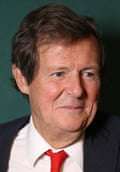
As a consequence, the one thing I don’t go to fiction for, these days, is entertainment. Obviously, I still want to have a good time. I share Jonathan Franzen’s reaction to the joyless slog represented (for him) by William Gaddis’s JR but I don’t want the kind of good time that ends up feeling like a waste of time. Chaired by Stella Rimington, the Booker year of 2011 was in some ways the belated last gasp of quality fiction as entertainment – or “readability”, as she called it. It was belated because David Hare had provided the epitaph a year earlier when he wrote that “the two most depressing words in the English language are ‘literary fiction’” (which sometimes feels like the aspirational, if commercially challenged, cousin of genre fiction).
Within the sprawl of nonfiction there is as much genre- and convention-dependency as in fiction. Nicholson Baker has argued persuasively that a recipe for successful nonfiction is an argument or thesis that can be summed up by reviewers and debated by the public without the tedious obligation of reading the whole book. In exceptional cases the title alone is enough. Malcolm Gladwell is the unquestioned master in this regard. Blink. Ah, got it. Some nonfiction books give the impression of being the dutiful fulfilment of contracts agreed on the basis of skilfully managed proposals. The finished books are like heavily expanded versions of those proposals – which then get boiled back down again with the sale of serial rights. Baker’s study of John Updike, U and I, on the other hand, is irreducible in that there is no thesis or argument and very little story. The only way to experience the book is to read it. Which is exactly what one would say of any worthwhile piece of fiction.
Don’t let me be misunderstood. The novel is not dead or dying. But at any given time, particular cultural forms come into their own. (No sane person would claim that, in the 1990s, advances were made in the composition of string quartets to rival those being made in electronic music.) Sometimes, advances are made at the expense of already established forms; other times, the established forms are themselves challenged and reinvigorated by the resulting blowback. At this moment, it’s the shifting sands between fiction and nonfiction that compel attention.
The difference between fiction and nonfiction is quite reasonably assumed to depend on whether stuff is invented or factually reliable. Now, in some kinds of writing – history, reportage and some species of memoir or true adventure – there is zero room for manoeuvre. Everything must be rigorously fact-checked. The appeal of a book such as Touching the Void is dependent absolutely on Joe Simpson being roped to the rock face of what happened. In military history, as Beevor commands, no liberties may be taken. As the author of many nonfiction books which are full of invention, I second this wholeheartedly.
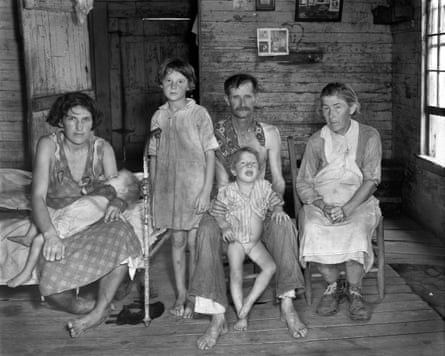
The manipulations and inventions manufactured by Werner Herzog in the higher service of what he calls “ecstatic truth” leave the defences of documentary at large dangerously lowered. In my defence I would argue that the contrivances in my nonfiction are so factually trivial that their inclusion takes no skin off even the most inquisitorial nose. The Missing of the Somme begins with mention of a visit to the Natural History Museum with my grandfather – who never set foot in a museum in his life. Yoga for People Who Can’t Be Bothered to Do It was categorised as nonfiction because that’s what the publishers deemed most likely to succeed – ie, least likely to sink without trace. One of these “travel essays” – as the book was packaged in America – involved a psychedelic misadventure in Amsterdam, climaxing with a peculiar occurrence in a cafe toilet. Most of the story – which had originally appeared in an anthology of fiction – is a faithful transcript of stuff that really happened, but that incident was pinched from an anecdote someone told me about a portable toilet at Glastonbury. All that matters is that the reader can’t see the joins, that there is no textural change between reliable fabric and fabrication. In other words, the issue is one not of accuracy but aesthetics. That is why the photographer Walker Evans turned noun into adjective by insisting on the designation “documentary style” for his work. Exporting this across to literature, style itself can become a form of invention. As the did-it-really-happen? issue gives way to questions of style and form, so we are brought back to the expectations engendered by certain forms: how we expect to read certain books, how we expect them to behave. The dizziness occasioned by WG Sebald lay in the way that we really didn’t know quite what we were reading. To adapt a line of Clint Eastwood’s from Coogan’s Bluff, we didn’t know what was happening – even as it was happening to us. That mesmeric uncertainty has diminished slightly since the Sebald software has, as it were, been made available for free download by numerous acolytes, but a similar categorical refusal informs Ben Lerner’s 10.04, “a work,” as his narrator puts it, “that, like a poem, is neither fiction nor nonfiction, but a flickering between them”. The flicker is sustained on an epic scale – in a thoroughly domestic sort of way – by Karl Ove Knausgaard’s six-volume My Struggle series. A side-effect or aftershock of Knausgaard’s seismic shakeup was to make us realise how thoroughly bored we had become by plot. Rachel Cusk addressed and exploited this in her wonderfully plotless novel Outline, which was shortlisted for last year’s Goldsmiths prize.

Seeking to reward innovation and experimentation, this prize is a good and timely thing – but it’s unfortunate that it’s limited to fiction. While last year’s Samuel Johnson prize went to Helen Macdonald for her beautifully novel H Is for Hawk, much so-called experimental fiction comes in the tried-and-tested form of the sub-species of historical novel known as modernist. Had they been LPs rather than books, several contenders for last year’s Goldsmiths prize could have joined Will Self’s Shark in that oxymoronic section of Ray’s Jazz Shop: “secondhand avant garde”.
Twenty-four years ago, I was surprised to see But Beautiful – a neither-one-thing-nor-the-other book about jazz – in the bestsellers section of Books Etc on London’s Charing Cross Road. “Is that true?” I asked the manager. “No, no,” he replied consolingly. “We just didn’t know where else to put it.” Nowadays, there’s an increasing need for a section devoted to books that previously lacked a suitable home, or that could have been scattered between four or five different ones, none of which quite fit.
The danger, as genre-defying or creative nonfiction becomes a genre in its own right – with mix-and-match poised to become a matter of rote – is that no man’s land could become predictably congested. It also needs stressing that, as is often the case, a “new” situation turns out to have a long and distinguished prehistory. Where to stock Rebecca West’s Black Lamb and Grey Falcon (1941)? History? Travel (within the subsection of the Balkans or Yugoslavia)? Or perhaps, as she suggested, in a category devoted to works “in a form insane from any ordinary artistic or commercial point of view”. Maggie Nelson must have been very happy when proof copies of her latest book, The Argonauts, advertised it as a work of “autotheory” – happy because Roland Barthes had been saving a place for her in this hip new category. And so, as our proposed new section expands to make room for the diverse likes of Elizabeth Hardwick’s Sleepless Nights, Bruce Chatwin’s The Songlines, Simon Schama’s Dead Certainties, Roberto Calasso’s The Marriage of Cadmus and Harmony or Ivan Vladislavic’s Portrait With Keys, the most viable label might well turn out to be an old one: “literature”.
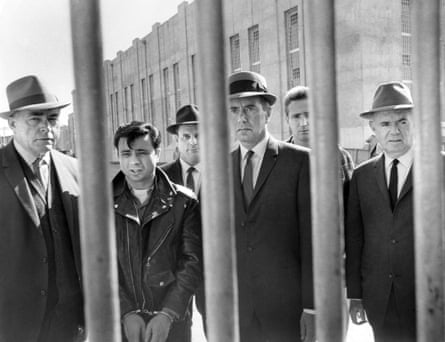
The nonfiction novels of Norman Mailer (The Executioner’s Song) or Truman Capote (In Cold Blood) changed the literary landscape, but the scope for further innovation was quickly noticed by the young Annie Dillard. “We’ve had the nonfiction novel,” she confided to her journal; “it’s time for the novelised book of nonfiction.” The book she was working on, Pilgrim at Tinker Creek, is a classic instance of the nonfiction work of art. Having won a Pulitzer prize for nonfiction in 1975, it went on to become the source of some controversy when it was revealed that the famous opening paragraph – in which the author awakens in bed to find herself covered in paw prints of blood, after her cat, a fighting tom, has returned from his nocturnal adventures – was a fiction. It’s not that she’d made this story up; she’d adapted it, with permission, from something written by a postgrad student. This was a shower in a teacup compared with the various storms that have swirled around Ryszard Kapuscinski. It’s a problem partly of his own making, since he repeatedly insisted that he was a reporter, that he had to “experience everything for [him]self”, that he didn’t have the freedoms of the imaginative writer, that while he “could embellish” the details of his stories, he decided against doing so on the grounds that it “would not be true”.
Gradually it emerged that this was part of the rhetoric of fiction, that he could not possibly have seen first-hand some of the things he claimed to have witnessed. For some readers this was a thoroughly disillusioning experience; for others it seemed that his exuberance and imaginative abundance were not always compatible with the obligations and diligence of the reporter. He remains a great writer – just not the kind of great writer he was supposed to be. (The potential for confusion was there from the outset; when Jonathan Miller was turning Kapuscinski’s book about Haile Selassie and Ethiopia, The Emperor, into an opera, the author reminded him that it was really a book about Poland.) Kapuscinski did not simply borrow the techniques and freedom of the novel; books such as The Soccer War or Another Day of Life generated the moulds from which they were formed – moulds which then dissolved, Mission Impossible-style, at the moment of the books’ completion. The essential thing – and this was something I discovered when writing But Beautiful as a series of improvisations – is to arrive at a form singularly appropriate to a particular subject, and to that subject alone.
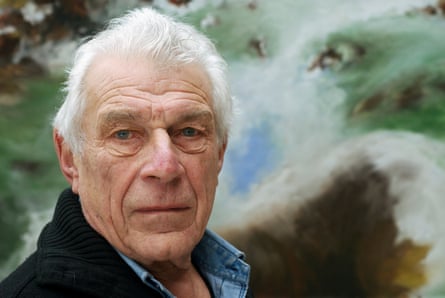
That book was dedicated to John Berger. Habitually identified as a “Marxist”, “art critic” or “polymath”, Berger has an extraordinary capacity for formal innovation which is easily overlooked. The documentary studies – of a country doctor in A Fortunate Man (1967), of migrant labour in A Seventh Man (1975) – he made with photographer Jean Mohr are unsurpassed in their marriage of image and text. The shift from the overt modernist complexities of the Booker prize-winning G to the stories of French peasant life was perceived, in some quarters, as a retreat to more traditional forms. Nothing – to use a phrase that may not be appropriate in this context – could be further from the truth. In its combination of poetry, fiction, documentary essays and historical analysis, Pig Earth (1979) was, even by Berger’s standards, his most formally innovative book – until he surpassed it with the next one, And Our Faces, My Heart, Brief As Photos. Berger was 89 on 5 November, bonfire night. He has been setting borders ablaze for almost 60 years, urging us towards the frontier of the possible.
Geoff Dyer received the 2015 Windham-Campbell prize for nonfiction. His new book, White Sands, will be published by Canongate in June
Aminatta Forna: ‘Fiction allows me to reach for a deeper, less literal kind of truth’

Each time a writer begins a book they make a contract with the reader. If the book is a work of fiction the contract is pretty vague, essentially saying: “Commit your time and patience to me and I will tell you a story.” There may be a sub-clause about entertaining the reader, or some such. In the contract for my novels I promise to try to show my readers a way of seeing the world in a way I hope they have not seen before. A contract for a work of nonfiction is a more precise affair. The writer says, I am telling you, and to the best of my ability, what I believe to be true. This is a contract that should not be broken lightly and why I have disagreed with writers of memoir (in particular) who happily alter facts to suit their narrative purposes. Break the contract and readers no longer know who to trust.
I write both fiction and nonfiction – to me they serve different purposes. On my noticeboard I have pinned the lines: “Nonfiction reveals the lies, but only metaphor can reveal the truth.” I don’t know who said it, I’m afraid. My first full-length work was a memoir of war, the rise of a dictatorship and my own family’s consequent fate. In the 12 years since its publication I have continued to explore the themes of civil war, though almost exclusively in fiction. Fiction allows me to reach for a deeper, less literal kind of truth.
However, when a writer comes to a story, whether fiction or nonfiction, they employ many of the same techniques, of narrative, plot, pace, mood and dialogue. This is one reason I think the distinction between fiction and nonfiction prizes is, well, a fiction. Writers such as Joan Didion, Mary Karr, Roger Deakin, and more recently Helen Macdonald, William Fiennes and Robert Macfarlane, are master craftsmen. These writers have broken the boundaries of nonfiction to reach for the kind of truth that fiction writers covet.
A few years back I judged an award for fiction in which the brief covered a writer’s entire output, but in a single genre. It made no sense. Gabriel García Márquez’s News of a Kidnapping is a furtherance of the line of questioning that began with Chronicle of a Death Foretold. Aleksandar Hemon’s essays are extensions of his novels and short stories, or vice versa. Marilynne Robinson’s essays are part of the same inquiry into the meaning of religion as Gilead or Home. There should be a prize quite simply for belles-lettres, as the French call it, for “fine writing” in any form.
Aminatta Forna’s most recent novel is The Hired Man, published by Bloomsbury, £8.99. Click here to order a copy for £7.19
Antony Beevor: ‘We seem to be experiencing a need for authenticity, even in works of fiction’
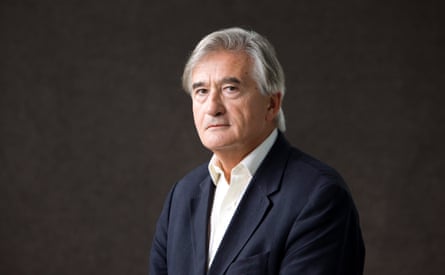
We are entering a post-literate world, where the moving image is king. The tagline “based on a true story” now seems vital when marketing movies. “Faction-creep” has increased both in television and the cinema. And more novels than ever before are set in the past. This is largely because the essence of human drama is moral dilemma, an element that our nonjudgmental society today rather lacks.
A blend of historical fact and fiction has been used in various forms since narrative began with sagas and epic poems. But today’s hybrid of faction has a different genesis, and is influenced by different motives. There is a more market-driven attempt to satisfy the modern desire in a fast-moving world to learn and be entertained at the same time. In any case, we seem to be experiencing a need for authenticity, even in works of fiction.
I have always loved novels set in the past. I began as a boy with Hornblower and Conan Doyle’s Brigadier Gerard stories because they offered excitement as well as escape into that “other country”. And more recently I have been gripped by Hilary Mantel’s trilogy about Thomas Cromwell. But however impressive her research and writing, I am left feeling deeply uneasy. Which parts were pure invention, which speculation and which were based on reliable sources?
Mantel writes: “For a novelist, this absence of intimate material is both a problem and an opportunity… Unlike the historian, the novelist doesn’t operate through hindsight. She lives inside the consciousness of her characters for whom the future is blank.” (In fact the historian should do both – first explain the world as it appeared to protagonists at the time, and then analyse with hindsight.) The problem arises precisely when the novelist imposes their consciousness on a real historical figure. Helen Dunmore (see below) said that novelists stray into “dangerous territory” when they fictionalise real people. She said that she was “very wary” of putting words into the mouths of characters from history.
Restorers of paintings and pottery follow a code of conduct in their work to distinguish the genuine and original material from what they are adding later. Should writers do the same? Should not the reader be told what is fact and what is invented? But if novelists do not want to make this distinction (say by the use of italics or bold to distinguish the true from the false) then why not change the names slightly, as in a roman à clef, to emphasise that their version is at least one step away from reality? The novelist Linda Grant argued that this also gives the writer much greater freedom of invention. Keeping real names shackles the imaginative writer perhaps more than they realise. In Tolstoy’s War and Peace, the most convincing and interesting characters are those he made up, not the historical figures. The most memorable characters of world fiction have always come from a great writer’s imagination.
Antony Beevor’s latest book is Ardennes 1944: Hitler’s Last Gamble, published by Viking, £25. Click here to order a copy for £18.75
Alan Johnson: ‘I stuck to a sequence of fiction followed by fact as if it were an unwritten commandment passed down to autodidacts like me’
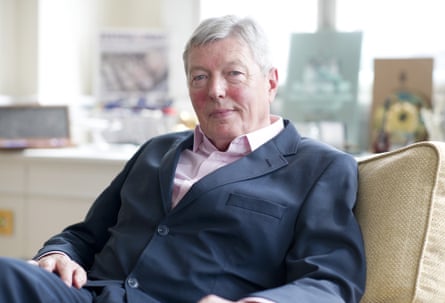
As a general rule I’ve always read fiction because I wanted to and nonfiction because I felt I had to. For a time I even stuck to a pedantic sequence of fiction followed by fact as if it were an unwritten commandment passed down to autodidacts like me.
There was also a certain amount of piety involved. Reading should be about learning. Pleasure should be a secondary consideration. I still recall the very first nonfiction book I ever read: The Blue Nile by Alan Moorehead. Since then I’ve loved many histories, memoirs, biographies and travel books. However, when choosing the next book to read (and what a wonderful moment that is) I’m still drawn more towards novels than the worthy tomes that I know will be more instructive.
I’ve known a few people who never read fiction but nobody yet who’s never read anything but. Even the most devoted film fan must appreciate the occasional documentary.
For the nonfiction obsessive I’d place True Grit by Charles Portis in their Christmas stocking in an attempt to convert them. As for my own favourite nonfiction book, it would have to be An Immaculate Mistake, an exquisite memoir of childhood by Paul Bailey. I often tell book festival audiences that I want to write fiction myself, to which the cynics in the audience suggest I write the next manifesto.
Alan Johnson’s second volume of memoirs, Please, Mister Postman, is published by Corgi, £8.99. Click here to order a copy for £7.19
Matt Haig: ‘The moment we trust too much in one fixed idea of reality is the moment we lose it’
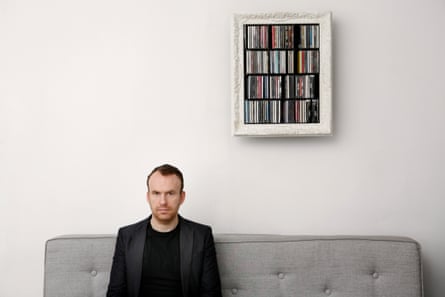
I like to think myself as anti-genre-labelling. There is nothing more likely to stunt your creativity than to think of walls between genres. I understand that booksellers, and even readers, need to know if a book is a crime novel or literary or commercial or romantic but for a writer, thinking in those terms is limiting.
Also, at the risk of sounding like a pretentious sixth-former, the divide between fiction and nonfiction is inherently false according to the multiverse theory, in that all fiction is true in one universe or other, so when you write a novel you are writing reality that belongs to somewhere else. But there is another reason the divide is false, or at least why it creates false ideas. And that is because things categorised as nonfiction can be inauthentic while fiction can contain more truth. The aim of any writer, even a fantasy writer, is the pursuit of truth.
I have written nonfiction and fiction. I wrote a science fiction novel that was very autobiographical about my experience of depression, and then I wrote a nonfiction book about depression. They were both about the same truth, but from different angles, and I wouldn’t have been able to write the nonfiction without the fiction first. We need both genres, sometimes at the same time, because the moment we trust too much in one fixed idea of reality is the moment we lose it.
But as a reader, I must admit I read more nonfiction than fiction at the moment, because there is so much good stuff around and because I am writing fiction and my mind likes the counterbalance.
Matt Haig’s most recent book for adults is Reasons to Stay Alive, published by Canongate, £9.99. Click here to order a copy for £7.99
Helen Dunmore: ‘Fiction gets under the guard. It creates empathy, changes fixed opinions and contributes to reform’
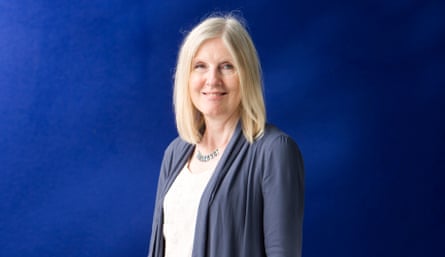
Photograph: Murdo Macleod/The Guardian
It might seem logical that nonfiction, with its rigorous foundation in fact, would be a more persuasive instrument of social change than fiction; but I believe this is not the case. When Harriet Beecher Stowe published Uncle Tom’s Cabin in 1852 it became an immediate bestseller in the US and Britain and helped to shatter white people’s complacency about slavery. There are important criticisms of Uncle Tom’s Cabin but, like Mark Twain’s Huckleberry Finn, the novel demolishes slavery’s belief system, denying that the enslaved are a different order of beings and may justifiably be exploited. More recently, Toni Morrison’s Beloved exposes the cost of slavery with searing brilliance, while Chinua Achebe dramatises the crude irruption of western missionaries and colonists into highly complex, sophisticated Igbo culture. Such novels not only add to a reader’s knowledge: they transform that reader’s internal landscape.
We are feeling creatures, and often it is only our refusal or inability to empathise that allows us to pursue our cruelties. Fiction gets under the guard. It creates empathy, changes fixed opinions and morality, and contributes to reform of law and social practice. When Victorians read Dickens or Elizabeth Gaskell they came to love the characters of Mary Barton, Ruth, Oliver Twist or Little Nell, and through them to know with full imaginative force the cost of industrialisation, the brutality of the workhouse, or the desperation of a “fallen” woman.
The sweatshop is still with us and so are slavery, the denial of rights to women and the sufferings of those swept aside. Read Sunjeev Sahota’s The Year of the Runaways and enter the world of immigrants without papers. Read Emma Healey’s Elizabeth Is Missing, and live inside a dissolving mind. You will not emerge from these books unchanged.
Helen Dunmore’s new novel, Exposure, will be published by Hutchinson in January, £16.99. Click here to order a copy for £13.59
Adam Sisman: ‘Being nosy, I enjoy investigating the lives of others… that they are real people is essential’
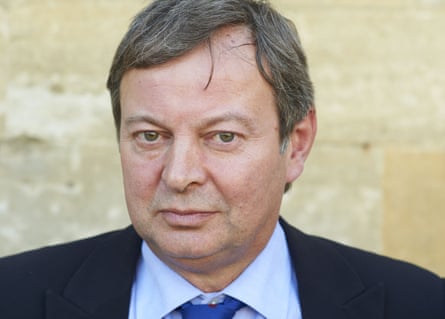
It is, I think, generally true that most writers write either fiction or nonfiction, to the exclusion of the other, most of the time; though it is easy to think of exceptions to this rule. Nicholas Shakespeare, for example, is a much-admired novelist, but he has also written an excellent biography of Bruce Chatwin. Before concentrating on thrillers, Robert Harris wrote several works of nonfiction, including Selling Hitler, a brilliant account of the “Hitler diaries” story. And so on.
As a writer, I specialise in biography, which seems to suit my interests and aptitudes. Being nosy, I enjoy investigating the lives of others, like a detective, or perhaps a spy. I relish reading other people’s letters and diaries, and poring over their manuscripts. That these others are real people is an essential part of the process. I can imagine a biography of a fictional character, but it would not be the kind of biography that I should want to write.
Though I write nonfiction, this does not mean that I do not read fiction: on the contrary, I consume more novels than any other type of book. My last biography was of the novelist John le Carré; if I had not gained so much pleasure from reading his work, I doubt if I would have enjoyed writing his life.
I notice that dedicated readers of fiction tend towards new books. I am probably unusual, in that I am as likely to read a novel written 100 years ago as one of those shortlisted for this year’s Booker. I am only slightly embarrassed to admit that the novel I am reading at the moment is by Marcel Proust.
In any case I feel that those readers who restrict themselves to fiction may be denying themselves pleasure as well as instruction. I would argue that biography can be as enriching and as entertaining as fiction. To those who doubt the truth of this, I recommend anything by Michael Holroyd or Richard Holmes, or Selina Hastings.
At its best, biography teaches us about life itself, just as fiction does. “I esteem biography, as giving us what comes near to ourselves, what we can turn to use,” Johnson told Boswell during their tour of the Hebrides. The great man had written almost every type of book, including works of both fiction and biography, so he knew a thing or two.
John le Carré: the Biography by Adam Sisman is published by Bloomsbury, £25. Click here to order a copy for £17.50
Jane Smiley: ‘Readers want to know not only what happened, but also how it looked, sounded, smelled, felt, what it meant then, and what it means now’
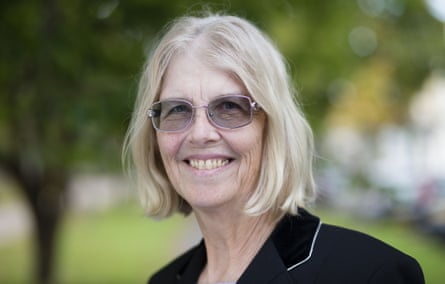
The goal of every author of every piece of writing is to get the reader willingly to suspend disbelief. Every piece of writing puts forth some logical argument and some theory of cause and effect for the simple reason that words, especially prose words, are sequential. The author and the reader both know that if the author doesn’t provide the logic, the reader will. But the logic of events and people as they exist in the world isn’t self-evident, and narrators of fiction and narrators of nonfiction have different ways of putting together their logical systems.
Nonfiction, history, is about what is known to be, or generally accepted to be, accurate. Facts are like archeological finds – they must strike us as tangible and real, therefore likely, plausible, attested, but also new and revelatory. The promise of nonfiction is that it is accurate, and therefore, like an archeological site, incomplete – here are the stone walls, here is part of a mosaic, here are two goblets. My theory concerns what these objects might mean, how they might be connected to an earthquake for which there is evidence, but I cannot go too far toward completeness or the reader, who might otherwise enjoy my narrative, will cease to be willing to suspend disbelief in its accuracy. It is certain that after I die, more tangible evidence will surface, some plates, some clay tablets, a skull with a spike pounded into the cranium, and so theories will change, and I will be praised for having stuck to the facts as they were then understood.
But the history of literature shows that listeners and readers want to know not only what happened, but also how it looked, sounded, smelled, felt, and also what it meant then and what it means now. They want to know but also to experience, and therefore they seek completeness, and so they willingly suspend disbelief in fiction (The Odyssey, the Book of Genesis, Waverley, Flashman). What they get from these sources is not only pleasure, but emotional education, the exercise of the imagination, an enlargement of the inner life. A writer of fiction also has a theory, a theory about what happened, and also about whether the past and the present are similar, whether people change or remain the same. As with the archaeologist, my theory, if I am a fiction writer, will be found wanting after I die, but pleasure in my stories may linger (War and Peace) or surge (The Private Memoirs and Confessions of a Justified Sinner). Chances are that in order to construct my narrative, I did plenty of research, but just as with historians, I know that as yet undiscovered sources will turn up. The test for my theory will not be whether my narrative is factually accurate. It will be whether my idea of human nature retains immediacy.
As a reader, I love both history and historical novels. What I get from Geoffrey Parker’s Global Crisis is insight into what did go wrong for humans of the 17th century and what could go wrong very soon in our world. What I get from Eleanor Catton’s The Luminaries is a tight, suspenseful formal puzzle combined with the feeling that I know how men in New Zealand in the 1860s are experiencing their world. Both are fascinating and valuable. Why should I forgo either?
Golden Age, the final volume in Jane Smiley’s Hundred Years trilogy, is published by Mantle, £18.99. Click here to order a copy for £14.99
David Kynaston: ‘After four decades of writing history books, I continue to feel a sense of inferiority to those who practise out-and-out literature’
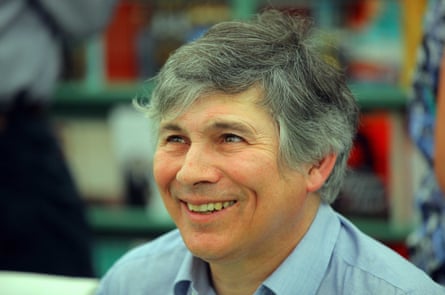
Fiction or nonfiction? I can only answer subjectively and autobiographically. From the start, reading modern history at Oxford in the early 1970s, I knew somehow that I was in the second-class carriage. Those doing English were more interesting, more glamorous, altogether more “it”. Years later, Martin Amis gave some comfort by retrospectively wishing he’d done it the other way round, but deep down, after four decades of writing history books, I continue to feel a sense of inferiority to those who practise out-and-out literature.
Why is fiction (leaving aside poetry and drama) superior? Not just because it reflects an intrinsically more creative process, but because at its best it is capable of getting inside the heads of people with a richness, complexity and profundity that no other genre (written or otherwise) can. I’ve read plenty of history and biography in my time, but never come across anyone who has meant quite as much to me as Pierre or Prince Andrei, Levin or Anna.
Of course, Tolstoy is on a pedestal – assuredly the greatest novelist. Dickens falls short, unable or unwilling to drill down into those heads; Flaubert is too contemptuous of his characters; Joyce takes that fateful wrong turn after Dubliners. But plenty of others do do it – Austen, Eliot, Fontane, Forster, Proust, Grossman, even in my time Pym and Powell – and, not to avoid the unavoidable cliche, enrich immeasurably our awareness of being human, even teach us how to live.
But there is something to be said, by me anyway, on the other side. Those might be my desert island authors – no question – yet it has been nonfiction that has at least as decisively shaped my view of the world, certainly once I was a young adult. George Orwell’s The Lion and the Unicorn gave me a compelling sense of 20th-century Britain; CLR James’s Beyond a Boundary, the greatest ever cricket book, enlarged the possibilities of history; the devastating memoirs of Nadezhda Mandelstam, widow of the poet Osip, belatedly made me realise that liberty ultimately trumps equality; EP Thompson’s The Poverty of Theory, his brutal but painstaking attack on the French philosopher Louis Althusser, taught me the virtues of empiricism. Now in my mid-60s, I am as happy (like many men my age) to turn to a biography or autobiography – at the moment Adam Mars-Jones’s Kid Gloves – as I try to understand the epoch I have passed through.
Even so, when the chips are down, nothing quite beats the right novel. Three years ago, I happened to be re-reading Anthony Trollope’s The Warden when I was diagnosed with cancer. During the anxious days and especially nights that followed, it did the job – and I was, and remain, grateful.
Modernity Britain by David Kynaston is published by Bloomsbury, £14.99. Click here to order a copy for £11.99
Caroline Sanderson: ‘Nonfiction can do anything fiction can do; and often does it better’

“So you’re a published writer,” says the person at the party. “What novels have you written?”
Why do we so often think of fiction as the outstanding form? As nonfiction previewer for the Bookseller, and the author of five nonfiction books of my own, I am often moved to question why fiction dominates our conversations about books.
The numbers certainly don’t support fiction’s pre-eminence. Novels are not what the majority of people buy, nor are they where most money is made. According to BookScan, in a printed book market worth £1.24bn between January and October this year, almost 40% of sales came from general (ie, non-academic) nonfiction, compared with 27% from adult fiction. And sales of hardback nonfiction are booming too: up 8.3% on 2014.
The problem is that the very term “nonfiction” is supremely unhelpful; a big, baggy anti-moniker that conceals a multitude of possibilities. It masks the fact that nonfiction can do anything fiction can do; and often does it better. Tell an exuberant, unruly true story of ordinary, conflicted people like Alexandra Fuller’s Leaving Before the Rains Come. Evoke faraway worlds which barely seem of the 21st century, like Colin Thubron’s To a Mountain in Tibet. Help us feel the thick presence of a time when our ancestors lived and breathed, as Yuval Noah Harari does in Sapiens.
The best nonfiction trumps fiction by combining the allure of a true story with the recounting of realities we are better off for knowing. By comparison, fiction is only made-up stuff.
Caroline Sanderson’s Someone Like Adele is published by Omnibus, £12.95
Kerry Hudson: ‘Yes, this is “made up” but this is also the most truthful thing I have to give you’

As a teen I left small town libraries all over the UK with novels stacked up to my chest and under my chin. I’d go home, lie in bed with the books scattered around me and luxuriate in the possibility of disappearing into different worlds, spending time with characters who mostly behaved as I wanted and expected them to and even if they didn’t, the pages could be closed, the book abandoned. Beyond that bed was the council estate, caravan or B&B we were living in, usually in a rough area with all the grim certainties of life on the margins. Fiction was my fantasy island and I avoided nonfiction – reality was something I had plenty of, thank you very much.
But reality bites and holds on tight and, as a writer, though it felt natural I would write fiction I still need an absolute truth, something ‘real’ to begin from. I will stretch and twist that reality, filter it through various fictional smoke and mirrors, expand and compress its meaning but at the centre of each book there is that grain of “this really happened”. Everything is built around that and I hope my readers feel that honesty. Yes, this is “made up” but this is also the most truthful thing I have to give you.
I finally discovered nonfiction when I was in my 20s and far from the life I’d had. I read [the slave memoir] The Interesting Narrative of the Life of Olaudah Equiano, Primo Levi’s If This Is a Man and Janice Galloway’s This Is Not About Me and realised it was time to leave my island and start exploring new worlds. I finally understood at the heart of most narratives, fiction or fact, there is human complexity and us readers trying to understand our own stories through the telling of others’. And then I wrote my own.
Kerry’s Hudson’s latest novel, Thirst, is published by Vintage, £8.99. Click here to order a copy for £6.99


